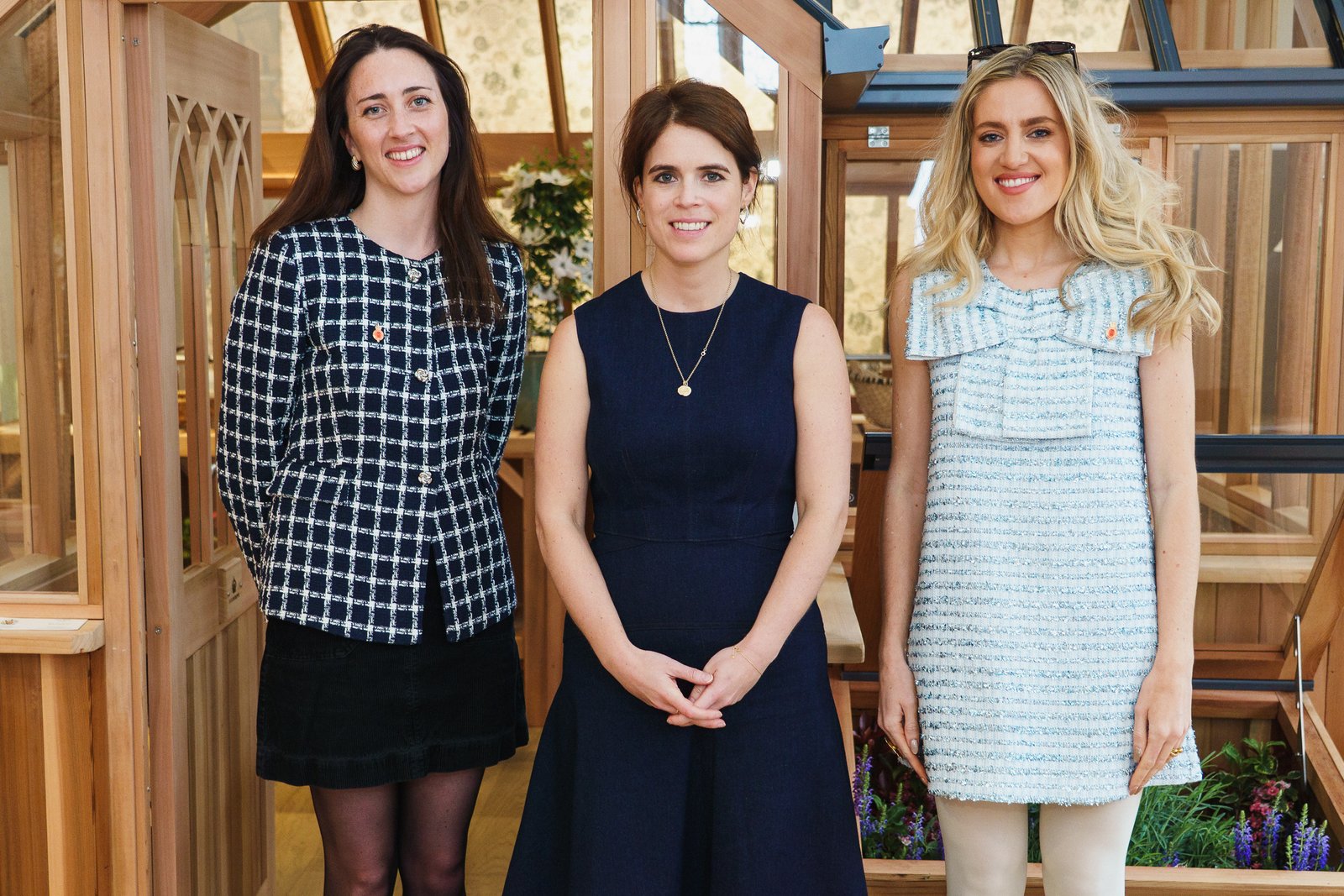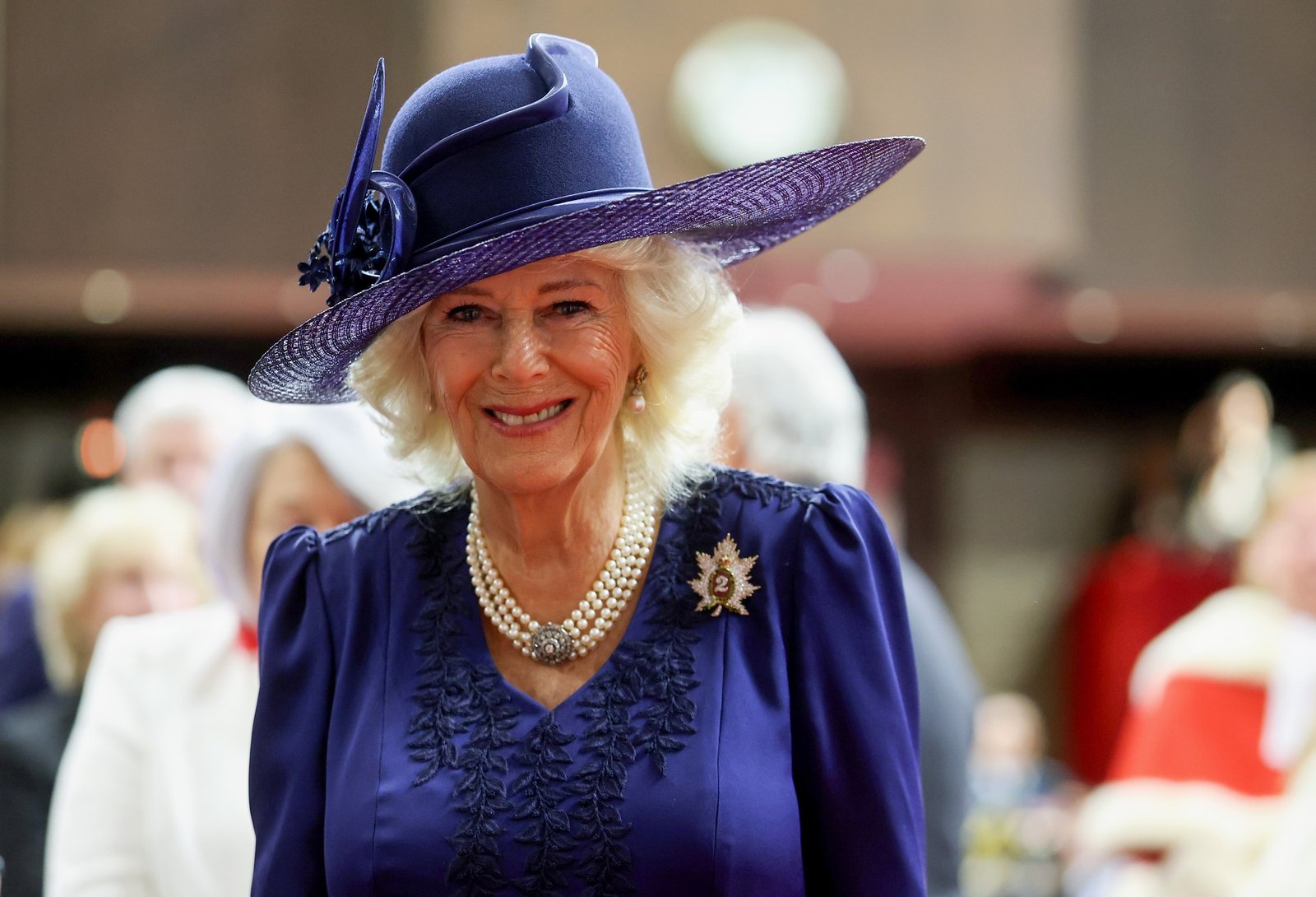On 20th November 1992, a fire broke out at Windsor Castle, The Queen’s favourite residence. The ancient castle suffered immense damage during the blaze, costing a total of £36.5 million to restore.
What happened?
At 11:30am, a faulty spotlight ignited a curtain next to the altar in Queen Victoria’s Private Chapel, located next to St George’s Hall in the Upper Ward. The alarms were sounded and the battle to keep the blaze under control began. However, due to the building’s age and lack of fire resistant materials, the flames quickly spread into Brunswick Tower, St George’s Hall, and the private apartments.
Contractors, who were working in the castle, tried to put the blaze out using fire extinguishers. At 11:36m, the local Fire and Rescue service arrived after being alerted to the incident.
Embed from Getty Images
The Private Chapel at Windsor, depicting the wedding of Princess Helena with Prince Christian of Schleswig-Holstein in 1866
At 11:40, the private fire brigade of Windsor Castle, located two miles south, arrived. The fire brigade consisted of around 20 fire fighters, who came equipped with a Land Rover and pump tender.
40 minutes later, the blaze had spread to St George’s Hall – the largest of the State Apartments.
By 1:30pm, fire breaks had been created by tradesmen at the southern wall of the Green Drawing Room, and at the north-west corner at Chester Tower; this meant removing any potential fuel for the fire, to try to contain it. The fire-fighters had managed to bring the fire under control, though the roof of the State Apartments had begun to collapse.

By 3:30 p.m. the floors of the Brunswick Tower – on the north side of the castle’s private apartments – had collapsed, and by 4:15 p.m. the fire had revived in the tower.
Less than three hours later, the hammerbeam roof of St George’s Hall came crashing down, but by 8pm, the fire was under control here. As darkness fell, the fire was concentrated in the tower, with flames of 15m seen leaping from structure.
Embed from Getty Images
The fire at Windsor Castle at the peak

At the peak of the inferno, firefighters were using 36 pumps to spray 1.5 million gallons of water.
Staff removed works of art from the fire’s path, that team including Prince Andrew, who had been staying at the castle at the time of the fire. Soldiers from the Household Cavalry, stationed nearby, were able to help with larger bulky items.
Luckily there were only two pieces lost to the blaze. The first was a rosewood sideboard, and the second was a painting of George III by Sir William Beechey. At 13 feet wide, it was too large to save.
Fortunately, because works were being carried out in the north east areas of the castle, where the fire began, the spaces were largely derelict of valuable artefacts, having already been removed in preparation for the task of rewiring.
Prince Andrew informed The Queen of the fire, also the day of her and Prince Philip’s 45th wedding anniversary. Her Majesty arrived at 3pm and stayed for an hour to oversee the operations being carried out. The Monarch witnessed the collapse of the roofs of the hall and tower, with The Duke of York describing his mother as ‘shocked and devastated’ at the events to the press.
The Duke of Edinburgh, meanwhile, was in Buenos Aires, chairing the World Wildlife Fund’s annual conference. He later explained his discovery of the news: “I was told, during a coffee break, that Windsor Castle was on fire – then I had to go back in and continue with the conference.”
The royal library and archives is located in the iconic round tower; the vast collection of royal papers, accounts, and diaries, as well as books survived in tact, probably due to its limited physical connection to other parts of the castle.
After burning for over 15 hours, the fire was finally extinguished at 2:30am. A total of nine state rooms were destroyed, and a further 100 rooms damaged. St George’s Hall, the Grand Reception Room, the Private Chapel (where the flames began), the State Dining Room, the Crimson Drawing Room, and the Green Drawing Room were chief amongst these.
Embed from Getty Images
St George’s Hall after the fire at Windsor Castle

The fire caused no serious injuries and no deaths. A handful of firemen were taken to hospital with minor injuries.
A total of 60 firefighters remained on duty for several days after the fire to tackle the debris and small pockets of fire which remained.
On the morning of 21st November, The Queen visited the castle to inspect the damage. Within three days, visitors were allowed back into the castle and The Queen was back in residence a fortnight later.
Embed from Getty Images Embed from Getty Images
Repairing fire damage at Windsor
There was a large debate as to who should pay for the damages, because royal palaces are too valuable to insure – the artefacts, and the stories of events within their walls are priceless. In theory, royal residences used for duties – Buckingham Palace, Windsor Castle, St James’s Palace, the Palace of Holyroodhouse and Hillsborough Castle (but not Balmoral or Sandringham)- are owned by the state and not the Monarch, much like all government offices.
The Royal Family faced backlash from the public after Prime Minister John Major indicated the taxpayer was to fund the restoration project. Repairs were estimated at between £20 and £40 million, and although the public sympathised with the Royals facing a difficult year (one separation, one divorce and now the fire), this was a step too far.
In response to the ongoing debate, and as a means to fund the post-fire repairs, The Queen opened up parts of Buckingham Palace for the public to visit in the summer. This was the first time the palace had been open to paying members of the public. The money raised from the entry fee (£8) went to the restoration project, which accounted for 70% of the repair bill.
The Queen gave £2 million to the refurbishment fund and also agreed to start paying income tax.
Embed from Getty Images Embed from Getty Images
The idea of paying income tax had been discussed within the royal household since February of 1992, with a government minister confirming this at the time. Nonetheless, it seemed as if the run of bad luck for the Royal Family – followed by the separation of the Waleses the month after – had forced the palace into acting on this, to maintain their reputation with the public.
The Prince of Wales openly supported the decision for The Queen to start paying income tax. The Prince voluntarily pays an equivalent to income tax from the income of the Duchy of Cornwall. He started paying 50% of the profits from 1969, when he was formally invested as Prince of Wales. This was reduced to 25% in 1981 when he married Lady Diana Spencer to help fund the couple and their anticipated family.
A restoration committee was set up, chaired by The Duke of Edinburgh, who had to consider a number of options, including how the manage restoration and how to fund it. The committee appointed Donald Insall Associates, an architectural firm to take charge of the project. Sidell Gibson was given the task of dealing with the restoration of St George’s Hall and the design of the private chapel.
In addition to this, an independent trust for private donations was launched in February 1993 by Coutts, The Queen’s bank.
The majority of damaged rooms were set to be restored as they were before. The chapel became a link between the hall and other state rooms – now called the Lantern Lobby – but it is marked with a stone that it was the location of the beginning of the fire.
A stained glass window also commemorates the events of November 1992 in the new chapel, moved into the private apartments; see the full window here, complete with bottom half showing firefighters battling the blaze, one carrying a painting to safety, while St George slays the dragon, with smoke billowing behind him.
All designs for the restoration project were approved by The Queen on 24 January 1995 – over two years after the incident.
St George’s Hall was restored close to the original 14th-century appearance but with a 20th-century perspective. A new hammer-beam roof was built using sustainable English oak. This was the largest oak structure built for centuries. The chapel was moved.
The restoration project was completed on 20th November 1997, five years after the outbreak and the 50th wedding anniversary of The Queen and The Duke of Edinburgh. Work was finished six months ahead of schedule and £3 million under budget.
In 1999, Prince Philip won the Europa Nostra Medal for his work on the project; Europa Nostra celebrates, protects and lobbies for cultural heritage, presenting awards to those who reflect these values. The ceremony took place in the Lantern Lobby – the location in which the fire started.








